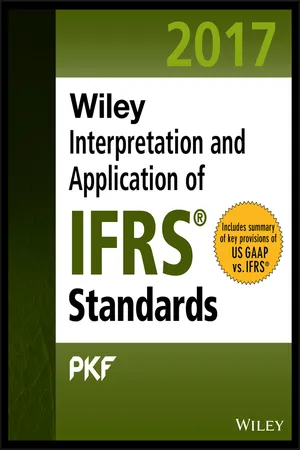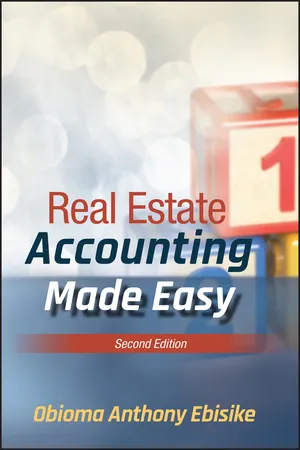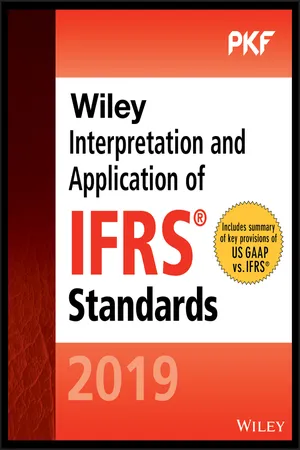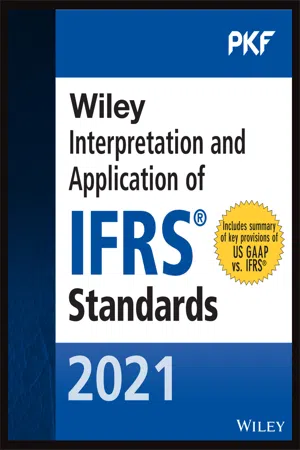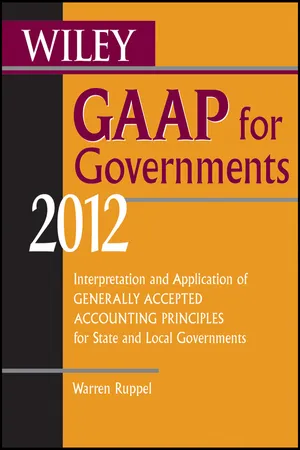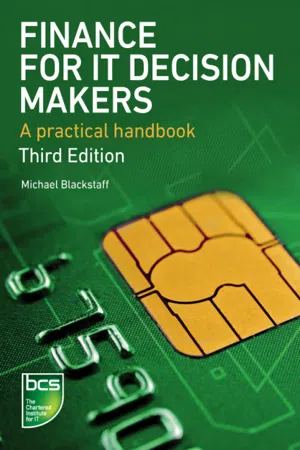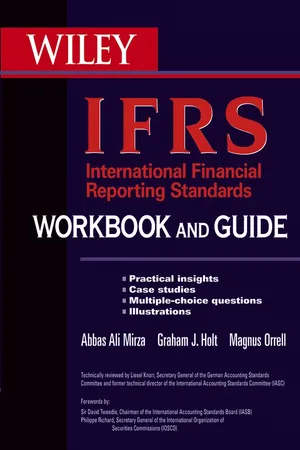Business
Lease Accounting
Lease accounting refers to the process of recording and reporting lease transactions in a company's financial statements. It involves classifying leases as either operating or finance leases and recognizing the associated assets and liabilities. The goal is to provide a clear picture of a company's lease-related financial obligations and the impact of leases on its financial position.
Written by Perlego with AI-assistance
Related key terms
Related key terms
1 of 4
Related key terms
1 of 3
8 Key excerpts on "Lease Accounting"
- eBook - ePub
Wiley IFRS 2017
Interpretation and Application of IFRS Standards
- (Author)
- 2017(Publication Date)
- Wiley(Publisher)
Leasing has long been a popular financing option for the acquisition of business property. During the past few decades, however, the business of leasing has experienced staggering growth, and much of this volume is reported in the statements of financial position. The tremendous popularity of leasing is quite understandable, as it offers great flexibility, often coupled with a range of economic advantages over ownership. Thus, with leasing, a lessee (borrower) is typically able to obtain 100% financing, whereas under a traditional credit purchase arrangement the buyer would generally have to make an initial equity investment. In many jurisdictions, a leasing arrangement offers tax benefits compared to the purchase option. The lessee is protected to an extent from the risk of obsolescence, although the lease terms will vary based on the extent to which the lessor bears this risk. For the lessor, there will be a regular stream of lease payments, which include interest that often will be at rates above commercial lending rates, and, at the end of the lease term, usually some residual value.The accounting for lease transactions involves a number of complexities, which derive partly from the range of alternative structures that are available to the parties. For example, in many cases leases can be configured to allow manipulation of the tax benefits, with other features such as lease term and implied interest rate adjusted to achieve the intended overall economics of the arrangement. Leases can be used to transfer ownership of the leased asset, and they can be used to transfer some or all of the risks normally associated with ownership. The financial reporting challenge is to have the economic substance of the transaction dictate the accounting treatment.The accounting for lease transactions is one of the best examples of the application of the principle of substance over form, as set forth in the IASB's Framework - eBook - ePub
- Obioma A. Ebisike(Author)
- 2019(Publication Date)
- Wiley(Publisher)
It is important to note, however, that the lease standard allows lessees to make an accounting policy election not to recognize right-of-use assets and lease liabilities for short-term leases. A short-term lease is defined as a lease that has a lease term of 12 months or less and does not include a purchase option that the lessee is reasonably certain to exercise. If a lessee were to make this election, then it should recognize lease expense on a straight-line basis over the lease term.LESSEE MEASUREMENT AND RECORDING OF OPERATING AND FINANCE LEASES
From the perspective of a lessee, a lease is classified as either an operating or finance lease. The difference between the two has already been discussed in the previous chapter, but in this chapter we discuss how these two leases are recorded by a lessee.For operating leases, a lessee is required to:2- Recognize a right-of-use asset and a lease liability, initially measured at the present value of the lease payments, in the statement of financial position.
- Recognize a single lease cost, calculated so that the cost of the lease is allocated over the lease term on a straight-line basis.
- Classify all cash payments within operating activities in the statement of cash flows.
For finance leases, a lessee is required to:3- Recognize a right-of-use asset and a lease liability, initially measured at the present value of the lease payments, in the statement of financial position.
- Recognize interest on the lease liability separately from amortization of the right-of-use asset in the statement of comprehensive income.
- Classify repayments of the principal portion of the lease liability within financing activities and payments of interest on the lease liability and variable lease payments within operating activities in the statement of cash flows.
CONTRACTS WITH MULTIPLE COMPONENTS
Before discussing further, let's define a lease and what constitutes a lease. ASC 842 defines a lease as a contract, or part of a contract, that conveys the right to control the use of identified property, plant, or equipment (an identified asset) for a period of time in exchange for consideration. It describes control over the use of the identified asset as when the lessee has both (i) the right to obtain substantially all of the economic benefits from the use of the assets and (ii) the right to direct the use of the asset. - eBook - ePub
Wiley GAAP for Governments 2017
Interpretation and Application of Generally Accepted Accounting Principles for State and Local Governments
- Warren Ruppel(Author)
- 2017(Publication Date)
- Wiley(Publisher)
NOTE: In the commercial sector, the FASB is reevaluating the accounting for leases, particularly operating leases. There are strong arguments that all leases, including operating leases, should be accounted for similarly to how capital leases are accounted for today. For example, if an entity signs a five-year lease for equipment that would currently be accounted for as an operating lease, hasn't it incurred a liability for lease payments over the next five years, similar to a borrowing? The question is, should this liability be recorded in the financial statements? Naturally, if a liability is recorded for lease payments, the entity also has an asset—its right to use, in this case, the equipment for the next five years. Hence, if future standards require this type of accounting, operating leases will look similar to today's accounting for capital leases. Of course, whether the GASB agrees with any or all of future changes in commercial GAAP will be determined after consideration and due process. However, readers should keep in mind that the GASB has a current project on its agenda to address Lease Accounting.GASBS 62 defines a lease as an agreement conveying the right to use capital assets (land and/or depreciable assets) usually for a stated period of time. It includes agreements that, although not nominally identified as leases, meet the above definition. This definition does not include agreements that are contracts for services that do not transfer the right to use capital assets from one contracting party to the other. On the other hand, agreements that do transfer the right to use capital assets meet the definition of a lease for purposes of applying the following provisions even though substantial services by the contractor (lessor) may be called for in connection with the operation or maintenance of such assets. GASBS 62 lease requirements do not apply to lease agreements concerning the rights to explore for or to exploit natural resources such as oil, gas, minerals, and timber. Nor do they apply to licensing agreements for items such as motion picture films, plays, manuscripts, patents, and copyrights. - (Author)
- 2019(Publication Date)
- Wiley(Publisher)
22 LEASES- Introduction
- Definitions of Terms
- Classification of Leases
- Classification of Leases—Lessee
- Lease term
- Classification of Leases—Lessor
- Different Types of Finance Leases
- Classification of Leases—Lessee
- Recognition and Measurement
- Accounting for Leases—Lessee
- Initial measurement
- Accounting for Leases—Lessor
- Operating leases
- Finance leases
- Sales-type leases
- Direct financing leases
- Lease Modifications
- Accounting for Leases—Lessee
- Disclosure Requirements Under IAS 17
- Lessee Disclosures
- Lessor Disclosures
- Examples OF Financial Statement Disclosures
- US GAAP Comparison
INTRODUCTION
Leasing has long been a popular financing option for the acquisition of business property. During the past few decades, however, the business of leasing has experienced staggering growth, and much of this volume is reported in the statements of financial position. The tremendous popularity of leasing is quite understandable, as it offers great flexibility, often coupled with a range of economic advantages over ownership. Thus, with leasing, a lessee (borrower) is typically able to obtain 100% financing, whereas under a traditional credit purchase arrangement the buyer would generally have to make an initial equity investment. In many jurisdictions, a leasing arrangement offers tax benefits compared to the purchase option. The lessee is protected to an extent from the risk of obsolescence, although the lease terms will vary based on the extent to which the lessor bears this risk. For the lessor, there will be a regular stream of lease payments, which include interests that often will be at rates above commercial lending rates, and, at the end of the lease term, usually some residual value.The IASB issued a new leases standard which supersedes the previous leases standard. The previous leases standard, IAS 17, focused on identifying when a lease is economically similar to purchasing the asset being leased. When a lease was determined to be economically similar to the purchase of the asset being leased, the lease was classified as a finance lease and reported on the balance sheet. An asset was recognised to bring into account the underlying asset effectively purchased, together with the corresponding liability of the lease. All other leases were classified as operating leases and not reported on the company’s balance sheet, i.e. the expense was reported in the income statement as and when incurred.- (Author)
- 2021(Publication Date)
- Wiley(Publisher)
22 LEASES- Introduction
- Definitions of Terms
- Classification of Leases
- Classification of Leases—Lessee
- Identifying a lease
- Lease term
- Classification of Leases—Lessor
- Different Types of Finance Leases
- Recognition and Measurement
- Accounting for Leases—Lessee
- Initial measurement
- Accounting for Leases—Lessor
- Operating leases
- Finance leases
- Sales‐type leases
- Direct financing leases
- Lease Modifications
- Disclosure Requirements
- Lessee Disclosures
- Lessor Disclosures
- Examples of Financial Statement Disclosures
- US GAAP Comparison
INTRODUCTION
Leasing has long been a popular financing option for the acquisition of business property. During the past few decades, however, the business of leasing has experienced staggering growth, and much of this volume is reported in the statements of financial position. The tremendous popularity of leasing is quite understandable, as it offers great flexibility, often coupled with a range of economic advantages over ownership. Thus, with leasing, a lessee (borrower) is typically able to obtain 100% financing, whereas under a traditional credit purchase arrangement the buyer would generally have to make an initial equity investment. In many jurisdictions, a leasing arrangement offers tax benefits compared to the purchase option. The lessee is protected to an extent from the risk of obsolescence, although the lease terms will vary based on the extent to which the lessor bears this risk. For the lessor, there will be a regular stream of lease payments, which include interests that often will be at rates above commercial lending rates, and, at the end of the lease term, usually some residual value.The IASB issued a new leases standard which supersedes the previous leases standard. The previous leases standard, IAS 17, focused on identifying when a lease is economically similar to purchasing the asset being leased. When a lease was determined to be economically similar to the purchase of the asset being leased, the lease was classified as a finance lease and reported on the balance sheet. An asset was recognised to bring into account the underlying asset effectively purchased, together with the corresponding liability of the lease. All other leases were classified as operating leases and not reported on the company's balance sheet, i.e., the expense was reported in the income statement as and when incurred.- eBook - ePub
Wiley GAAP for Governments 2012
Interpretation and Application of Generally Accepted Accounting Principles for State and Local Governments
- Warren Ruppel(Author)
- 2012(Publication Date)
- Wiley(Publisher)
The accounting for leases is derived from the view that a lease that transfers substantially all of the benefits and risks of ownership should be accounted for as the acquisition of an asset and the incurrence of a liability by the lessee (that is, a capital lease), and as a sale or financing by the lessor (that is, a sales-type, direct-financing, or leveraged lease). Other leases should be accounted for as operating leases; in other words, the rental of property.Lessee Accounting A lessee accounts for a lease as one of the following:NOTE: In the commercial sector, the FASB is reevaluating the accounting for leases, particularly operating leases. There are strong arguments that all leases, including operating leases, should be accounted for similar to how capital leases are accounted for today. For example, if an entity signs a five-year lease for equipment that would currently be accounted for as an operating lease, hasn’t it incurred a liability for lease payments over the next five years, similar to a borrowing? The question is, should this liability be recorded in the financial statements? Naturally, if a liability is recorded for lease payments, the entity also has an asset—its right to use, in this case, the equipment for the next five years. Hence, if future standards require this type of accounting, operating leases will look similar to today’s accounting for capital leases. Of course, whether the GASB agrees with any or all of future changes in commercial GAAP will be determined after consideration and due process. However, with governmental accounting so closely associated with commercial accounting, it would be logical to expect that the issue will at least be addressed.- Capital lease
- Operating lease
1. The lease transfers ownership of the property to the lessee by the end of the lease term. (To be a capital lease, a land lease must meet this criterion.)2. The lease contains a bargain purchase option. A bargain purchase option is a provision allowing the lessee, at its option, to purchase the lease property for a price sufficiently lower than the expected fair value of the property at the date the option becomes exercisable, and that exercise of the option appears, at the inception of the lease, to be reasonably assured.3. The lease term is equal to 75% or more of the estimated economic life of the leased property. However, if the beginning of the lease term falls within the last 25% of the total estimated economic life of the lease property, including earlier years of use, this criterion should not be used for purposes of classifying the lease. The estimated economic life - eBook - ePub
Finance for IT Decision Makers
A practical handbook
- Michael Blackstaff(Author)
- 2012(Publication Date)
- BCS, The Chartered Institute for IT(Publisher)
Even in some quite small organisations ‘IT’ often means a network of many individual machines, and the cabling, software and services that make them work and keep them working. For some organisations, help in acquiring, upgrading and eventually disposing of these assets is a major benefit of leasing. Furthermore, some leases – operating leases – provide protection against obsolescence of hardware by incorporating guaranteed ‘residual values’. (An explanation of residual value is given later in this chapter.) Furthermore, assets that are owned, and therefore ‘on the books’ of an organisation have to be accounted for, which means several things:- maintaining an asset register containing the financial details of every asset, where it is located and who is responsible for it;
- financial accounting;
- tax accounting;
- management accounting, especially in an organisation that is divisionalised.
The greater the number of assets, the bigger the accounting task. Making one single quarterly or annual payment to a finance company rather than having to account for perhaps thousands of individual assets can be a major benefit for many organisations. As we shall see, however, only one kind of lease – the ‘operating lease’ – has the effect of taking the leased assets ‘off the books’ of the customer organisation.Financial management Aspects of financial management for which leasing is used include the following:LEASE DEFINITIONS- ‘Off book’ financing and the optimisation of key financial ratios (explained later in this chapter).
- International financing (also explained later).
- Lower interest rates (leasing may sometimes be cheaper than ordinary borrowing).
- There may be possible tax advantages.
We shall now define and consider the two main kinds of lease (‘finance’ and ‘operating’) and some of their variations, using the definitions and supplementary information in IAS 17 – Leases. While these are indeed two quite different kinds of lease it is nevertheless becoming less common for leases to be written in their simple generic forms. As organisations’ IT requirements are becoming more complex, and as services and software feature ever more prominently, so the boundaries between one kind of lease and another may become blurred. Increasingly, financing arrangements are being devised that contain elements of both kinds of lease. For financing things such as services and termination charges, that cannot be leased, then loan finance may be built into the overall financing arrangement as well. - eBook - ePub
International Financial Reporting Standards (IFRS) Workbook and Guide
Practical insights, Case studies, Multiple-choice questions, Illustrations
- Abbas A. Mirza, Graham Holt, Magnus Orrell(Authors)
- 2010(Publication Date)
- Wiley(Publisher)
12LEASES (IAS 17)1. BACKGROUND AND INTRODUCTION
This Standard prescribes the accounting treatment for leases in the financial statements of lessees and lessors.2. SCOPE
2.1 The Standard shall be applied in accounting for leases other thana. Leases to explore for or use nonregenerative resources such as oil, natural gas, and so forth b. Licensing arrangements for motion pictures, video recordings, music, and so on2.2 The Standard shall not be applied in the measurement of• Property held by lessees that is an investment property (see IAS 40) • Investment property provided by lessors under operating leases (see IAS 40) • Biological assets held by lessees under finance leases (see IAS 41) • Biological assets provided by lessors under operating leases (see IAS 41)3. DEFINITIONS OF KEY TERMS (in accordance with IAS 17)
Lease. An agreement whereby the lessor conveys to the lessee in return for payment the right to use an asset for an agreed period of time.Finance lease. A lease that transfers substantially all the risks and rewards of ownership of an asset. Title need not necessarily be eventually transferred.Operating lease. A lease that is not a finance lease.Minimum lease payments. The payments over the lease term that are required to be made. For a lessee, this includes any amounts guaranteed to be paid; for a lessor, this includes any residual value guaranteed to the lessor.The definition of a lease includes those contracts for hire of an asset that contain provisions for the hirer to acquire title to the asset upon fulfillment of agreed conditions—these are sometimes called hire purchase contracts.Practical InsightRHI AG, an Austrian entity, states in its 2003 financial statements that the move to International Financial Reporting Standards (IFRS) has increased the opening book value of all its noncurrent assets by €69 million. It explains that, under Austrian generally accepted accounting principles (GAAP), the depreciation of noncurrent assets is influenced partly by tax considerations, while under IFRS, it is in line with expected useful lives.
Index pages curate the most relevant extracts from our library of academic textbooks. They’ve been created using an in-house natural language model (NLM), each adding context and meaning to key research topics.
Explore more topic indexes
Explore more topic indexes
1 of 6
Explore more topic indexes
1 of 4
